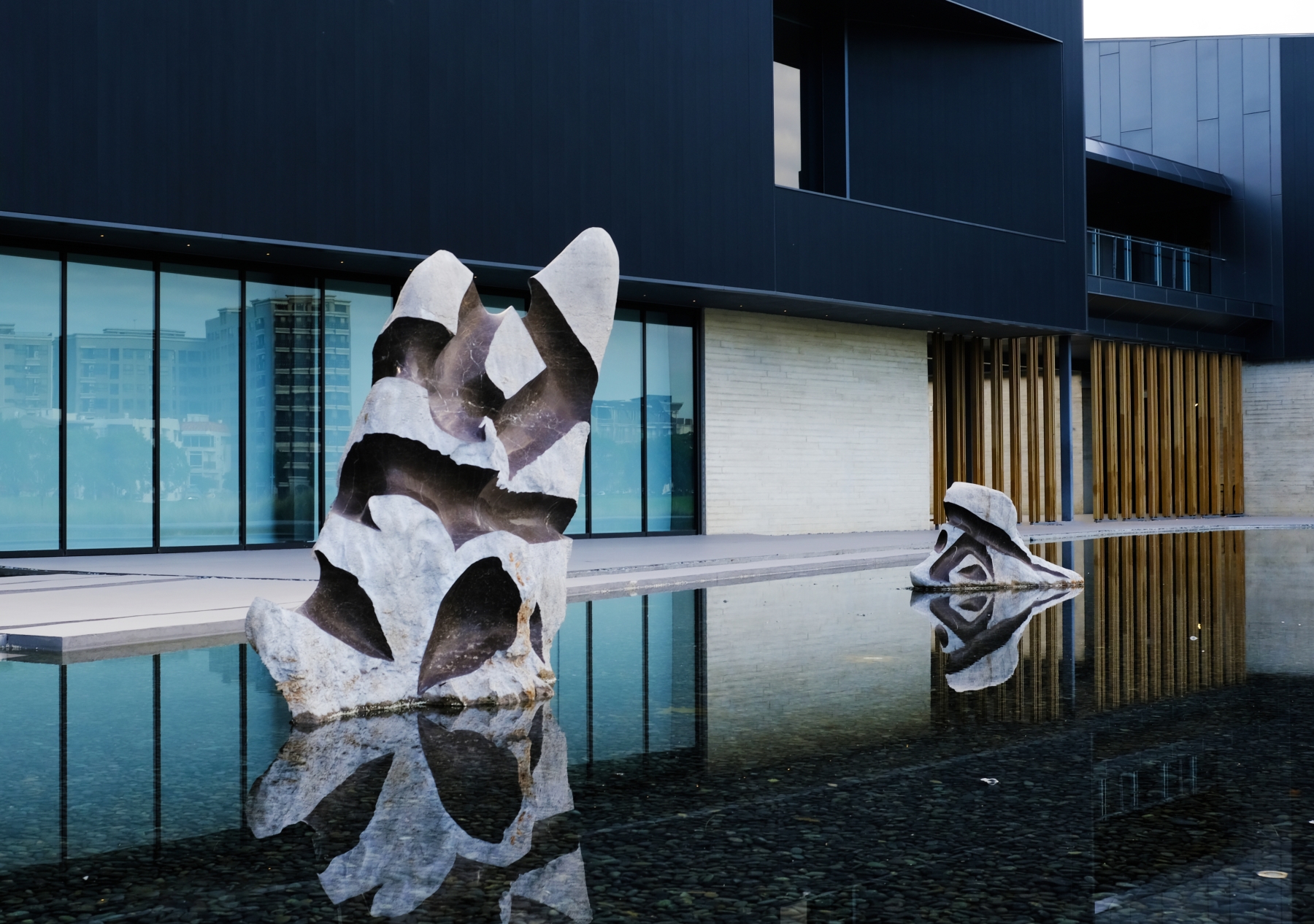Published on:2023-01-19Views:60

Artwork Analysis
Born in Shanghai, China, Gu Wenda (1955–) graduated from the graduate program of the Department of Chinese Painting, China Academy of Art, and has studied with Lu Yanshao. After graduating in 1981, he immediately engaged in conceptual ink painting creation. As one of the leaders of the 85 New Wave Art Movement in China, he started the practice of conceptual ink painting in China. After emigrating to the USA in 1987, he became an active modern artist in China, the USA, and the world. His serial works include the “Mythos of Lost Dynasties”, “United Nations”, “Forest of Stone Steles - Retranslation & Rewriting Tang Poetry”, and “Gu’s Phrases”.
Intellectually, Gu combines Western philosophy with the thought of Lao Tzu and Chuang Tzu, Yi Studies, and Zen. Artistically, he creates works through the deconstruction and reconstruction of Chinese traditional culture and Western culture to explore the fusion and difficulty in global cultural exchange. Particularly, the Chinese calligraphy and ink painting works in his “Forest of Stone Steles” and “Gu’s Phrases” that make metaphors with text are considered as the artistic practice of Jacques Derrida’s deconstructionism by contemporary Chinese artists.
“Forest of Stone Steles Eight Series: Xianshi Steles” is created based on the “Gu’s Phrases”. With the traditional “ligature” technique of China, he combined two or more simple characters into a ligature. This work is inspired by the titles of ancient Chinese officials: grand preceptor, royal consultant, commander, Duke of Lu, and palace attendant. With these five titles, the artist refers to five great Chinese calligraphers: Su Dongpo, Liu Gongquan, Wang Xizhi, Yan Zhenqing, and Ouyang Xun. He inscribed these phrases on the stone in regular script stroke by stroke. Ideograms cover irregular ocean floor rocks with multiple faces. As it is difficult to read the complete sign at a glance, the deconstruction of vision and meaning is formed. Aesthetically, the texture of the stele and the interest and charm or the handwriting preserve the aesthetic context of traditional calligraphy. The work combines conceptual expression and the aesthetics of Chinese characters, like an aesthetic transmutation in the perspective of contemporary through the historical context of Chinese calligraphy.
Intellectually, Gu combines Western philosophy with the thought of Lao Tzu and Chuang Tzu, Yi Studies, and Zen. Artistically, he creates works through the deconstruction and reconstruction of Chinese traditional culture and Western culture to explore the fusion and difficulty in global cultural exchange. Particularly, the Chinese calligraphy and ink painting works in his “Forest of Stone Steles” and “Gu’s Phrases” that make metaphors with text are considered as the artistic practice of Jacques Derrida’s deconstructionism by contemporary Chinese artists.
“Forest of Stone Steles Eight Series: Xianshi Steles” is created based on the “Gu’s Phrases”. With the traditional “ligature” technique of China, he combined two or more simple characters into a ligature. This work is inspired by the titles of ancient Chinese officials: grand preceptor, royal consultant, commander, Duke of Lu, and palace attendant. With these five titles, the artist refers to five great Chinese calligraphers: Su Dongpo, Liu Gongquan, Wang Xizhi, Yan Zhenqing, and Ouyang Xun. He inscribed these phrases on the stone in regular script stroke by stroke. Ideograms cover irregular ocean floor rocks with multiple faces. As it is difficult to read the complete sign at a glance, the deconstruction of vision and meaning is formed. Aesthetically, the texture of the stele and the interest and charm or the handwriting preserve the aesthetic context of traditional calligraphy. The work combines conceptual expression and the aesthetics of Chinese characters, like an aesthetic transmutation in the perspective of contemporary through the historical context of Chinese calligraphy.
Artist Profile
More information coming soon.